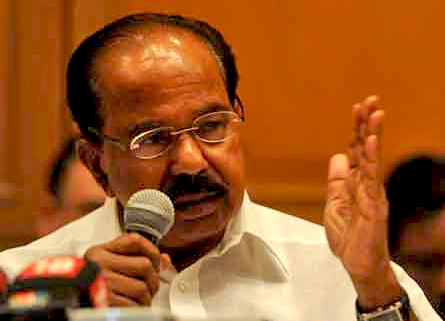Bhopal, May 20: Two months after Deepak Bundele, an advocate and former journalist, was brutally assaulted by the Madhya Pradesh’s Betul Police on March 23, an Assistant Sub-Inspector of Kotwali Police Station in Betul district, BS Patel, approached the victim to record his statement. However, he allegedly tried to convince Bundele to withdraw the case saying that the cops had mistaken him for a Muslim since he has a long beard and assaulted him. But, the cop added, they were ashamed of the incident after they came to know that they had beaten their ‘Hindu brother’.
Bundele was on his way to the government hospital for diabetes treatment, a day before the countrywide lockdown was announced, when the assault occurred. Miffed with the incident and after the district police denied to register the case, he wrote to the State Human Rights Commission; Chief Justice of Madhya Pradesh High Court; Chief Minister Shivraj Singh Chouhan; Vivek Johri, Director General of Police, Madhya Pradesh; and SP Betul to register an FIR against the police officials and take punitive action against them.
In the wake of COVID-19 pandemic outbreak, section 144 had been imposed in Betul district and public movement was restricted when the incident had occurred.
Talking to Bundele, ASI Patel had said, “We seek an apology on behalf of those officials [who assaulted Bundele]. We are truly embarrassed because of the incident. If you want, I can bring those officials and make them apologise in person to you. They mistook you as a Muslim and assaulted you, since you had a long beard. And the man (who assaulted you) is a kattar (staunch) Hindu…In Hindu-Muslim riots whenever a Muslim is arrested, they beat them up brutally, always,” the police official can be heard saying in an audio recording shared by the victim.
In the 14 minutes long audio, he further said, “I request to you to withdraw the complaint. Please agree to our request; understand that we are living in Gandhi’s country; we are all Gandhi’s children…I have at least 50 friends from your caste.”
The cop continued, “All those people are ashamed that they did something like this to a Hindu brother without knowing his identity. We do not have any enmity against you. Whenever there is a Hindu-Muslim riot, police always supports the Hindus; even Muslims know this. But whatever happened with you was because of ignorance. For that, I have no words.”
Refuting ASI Patel’s claim, Bundele claimed that there was no Hindu-Muslim riot that day, and asked whether he was beaten for being wrongly identified as a Muslim. The police officials agreed, and said: “Yes, exactly.”
“When I constantly declined to withdraw the compliant, he indirectly threatened me saying, ‘Agree to our request, else you and your advocate brother will face consequences’,” Bundele claimed.
When contacted Betul SP DS Bhadoriya said, “I’m not aware of this audio clip. I will taken strict action, if I receive any such complain.”
Bundele said that he has written to the DGP and other senior police officials with details about the incident.
THE ASSAULT
On March 23 evening, when Bundele was on his way to a hospital for the treatment, Betul Police allegedly thrashed him. The 32-year-old advocate had worked as a journalist for various dailies in Madhya Pradesh’s state capital for a decade. He moved to Betul in 2017 and started practising in the district court with his brother. “I have been a patient of diabetes and blood pressure for the last 15 years. On March 23, since I was not feeling well, I decided to visit the hospital and get some medicines. But I was stopped by the police midway,” Bundele had said.
Even though the advocate, who sports a beard, said that he explained to police personnel that he had to get his medicines but one of them slapped him without trying to listen to what he was saying. “When I protested and said that police have no right to beat the public, they got anxious and within no time, many police officials came and started beating me up with sticks,” he added.
"I need constant medication and lifesaving medicines to survive and I told the policemen everything while they were assaulting me. But, they kept hitting me, even after I fell,” he said, adding, "I bled for almost a 2-3 days after the incident.”
Bundele, sustained multiple injuries and his ear bled for almost two days after the incident, but, Betul police denied to file an FIR in the incident.
‘WILL MOVE TO THE HIGH COURT’
“Even after two months of the incident, no FIR has been registered and it seems that police is trying to sweep the matter under the carpet,” Bundele said, adding, “I have talked to the Supreme Court’s veteran advocate Vivek Tankha and Etasham Hashmi and will take this matter to the court.”
He also raised serious concerns about the communal angle of the incident, saying, “It’s a matter of grave concern that the police is turning communal and targeting a particular community.”
Source: https://www.google.com/amp/s/m.thewire.in/article/communalism/madhya-pr…
 Tumkur, Jun 1: The increase in prices of petrol and diesel was to respond to the rupee depreciation, Union Petroleum and Natural Gas Minister Veerappa Moily said today defending the hike effected after the rupee hit a 11-month low making oil imports costlier.
Tumkur, Jun 1: The increase in prices of petrol and diesel was to respond to the rupee depreciation, Union Petroleum and Natural Gas Minister Veerappa Moily said today defending the hike effected after the rupee hit a 11-month low making oil imports costlier.




Comments
Add new comment